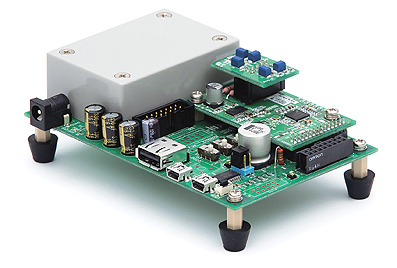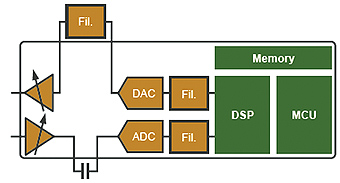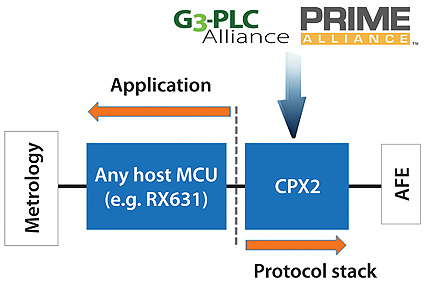Do they fulfil todays and future requirements and

is there a “best way” to deal with the plethora of standards? As always it’s not only the technical aspects, but also the commercial ones.

Author: Kevin Jones, Renesas Electronics Europe
Communication technologies and related standards have probably been one of the most discussed topics in the last two decades when it comes to smart metering or smart grid installations as they have the potential to revolutionise the smart grid. The whole industry was claiming the lack of “open standards” covering the needs for smart metering and smart grids overall. For power line communication, as for other technologies, thousands of experts have been working on standards since then and now they are in place, in abundance.
Looking to the European utility landscape, there are variations from country to county. Monopolist electricity markets like France or Italy, with one dominant distribution company. Countries with a small number of big distribution companies like Spain, and the very fragmented markets with multiple utilities. The large installations and pilot trials in Europe so far show that power line communication is the most adopted technology and this is probably valid independent of the market fragmentation. The requirements towards the power line technology have changed since 2001 when Enel deployed the first smart metering solution worldwide in Italy.

The application requirements evolved from AMR (Automatic Meter Reading) over AMI (Advanced Metering Infrastructure) to AMM (Automated Meter Management) with requirements reaching from low data rate single directional communication, to real time bi-directional communication. The latter required in smart grid applications for demand response and supply management to control peak demand and overall load balancing. This trend is not expected to stop here.
As a result there is continuous evolution in standards. If we consider power line communication then there are a plethora of types; low speed / medium speed narrowband technology, high speed or broadband technology. All use some form of modulation technique; DCSK, FSK, SFSK, OFDM etc. If we consider OFDM based narrowband technology alone, then there too are many standards; PRIME versions 1.3.6 and 1.4, ITU-T G.9903 (G3 PLC) and IEEE P1901.2 to name a few. So where have they come from?
Probably the most important driving factor behind these standards are the utility companies themselves. If we delve deeper then we could probably say that these are driven by the utility companies operating in the monopolist electricity markets or certainly ones with a very large share of a fragmented market. One of the original standards was PLAN or IEC 61334-4 developed by ERDF who are now one of the driving forces behind the ITU-T G.9903 (G3-PLC) standard. Another of the most widely adopted standards is PRIME as driven by Iberdrola, and the aforementioned Enel is behind the Meters and More Alliance. The major advantage of a standard is that it can be adopted by industry as a de-facto technology. This leads to multiple inter-operable implementations by the suppliers to the utility companies or meter makers which provides a choice of vendors, increases competition and ultimately drives down the cost of the solution.
In recent years we have seen the introduction of government imposed targets. Arguably the most important of these being the EU’s ambitious 20:20:20 target which states that EU Member Countries must “ensure the implementation of intelligent metering systems” with 80% coverage by 2020 and full deployment by 2022.
Local regulations then mandate the use of open standards. All in all this forces utilities to act quickly and select an open standard to start deployment of meters within already tight timescales. This doesn’t just affect the utility companies. Just because a standard exists or is open, it does not mean there are many implementations of it, or that they are interoperable. When you consider the scale of the deployments these factors become critical.

Consider the Zigbee Alliance, the Alliance was formed in 2002 but it wasn’t until 4 years later that the first Zigbee products became available.
It was then another 2 years before certified products were available. For Smart Metering the semiconductor companies must have a device capable of implementing the lower layers. Then there are the protocol stacks, which need development by semiconductor vendors, 3rd parties or meter makers. These solutions need integrating into meters and testing extensively in pilot trials. These factors help explain why the utility companies themselves are driving the standards.
Even when we consider narrowband OFDM based PLC solutions then the differences span many layers of the OSI Model. At the physical layer there are differences in the carrier frequencies and spacing, the number of constellations used in the mapping, repetitions in the encoders and different error correction techniques. These all affect the robustness and the achieved data rates of each standard at the theoretical level. At the MAC layer there are subtleties in the channel access, security, tone mapping, addressing and sizes, segmentation lengths which again all have an effect on the throughput of data frames and arguably the robustness of the solution. Next is the network layer, here the differences are even more varied, compression techniques, header sizes, maximum transmission units, routing protocols (On-demand or table based and the different topologies that are formed, Mesh, Star, Tree…). We could of course continue through the rest of the OSI layers. Whilst there is no obvious leader or best performing PLC standard for smart metering, the meter makers are almost forced to support them all.
Looking to the investments that are required for semiconductor solutions as well as the development cycles, the most efficient approach to support the ongoing evolution and the variety of standards is to implement a purely software based solution. Renesas has launched Cool Phoenix 2 (CPX2), the second generation device of the award winning Cool Phoenix family which keeps the flexible concept allowing a single device to support multiple standards for instance G3 and PRIME. Whilst the device is pin compatible to its predecessor it offers more memory as well as higher performance supporting multiple frequency bands like CENELEC, FCC and ARIB. The AES security engine features ECB, CBC and CCM modes with key lengths of 128, 192 or 256 bit respectively. This kind of flexible, software based solution is advantageous for meter makers who are targeting worldwide markets. Multiple standards and/or frequency bands can be supported with a single platform which significantly reduces the design effort and cost. Any potential changes or enhancements to the standards can be integrated seamlessly by reprogramming installed meters remotely, and this is a benefit for any market, independent of its fragmentation.
Whilst the software based architecture of CPX2 is offering the flexibility, the integrated analogue front end (AFE) with an adaptive gain amplifier and automatic gain control (AGC) functions, ensure an exceptional signal quality.
This results in outstanding robustness especially important in highly dynamic and harsh network environments as found in metering applications. The very low power consumption is also one of the major selection criterion from utilities. In combination with a wide range of Renesas pin, software compatible and scalable microcontrollers for metering applications, the CPX2 power line modem solution provides a perfect fit for cost sensitive smart meter platforms. Renesas also offers fully certified protocol stacks for PRIME and G3, free of charge.
As time to market is of similar essence to the technical features, Renesas offers the “Connect it! – Powerline Communication Solution Kit”. This simple to use tool enables customers to evaluate the robustness of the CPX2 PLC solution in all frequency bands. The PC GUI allows flexible device configuration and power line communication analysis. In combination with the world wide support infrastructure and Renesas’ commitment to its customers everything is available to ensure an efficient and short development time.
There has been a lot of activity on communication standards over the last few years, especially for power line communication. During this time there have been major advancements made, driven by the utility companies, but most of these for the smart metering market. There have also been industry discussions within Europe to open up the spectrum and allow the use of frequencies up to 500 kHz for smart metering or smart grid applications. However, it’s difficult to imagine that these advancements will still meet the requirements of tomorrow’s smart energy demands. The recent introduction of IPv6 goes a long way to solve the vast number of connected devices but the standards will continue to evolve.
The applications that could be added to this infrastructure appear endless, demand management via appliance control, home automation, car charging, security etc. As each new application is added then the demands on the communication increase and so too the demands on the devices running these protocol stacks. All told, the only way to future proof any design is to select a well-founded roadmap and ensure its flexibility.
RENESAS
www.renesas.com


